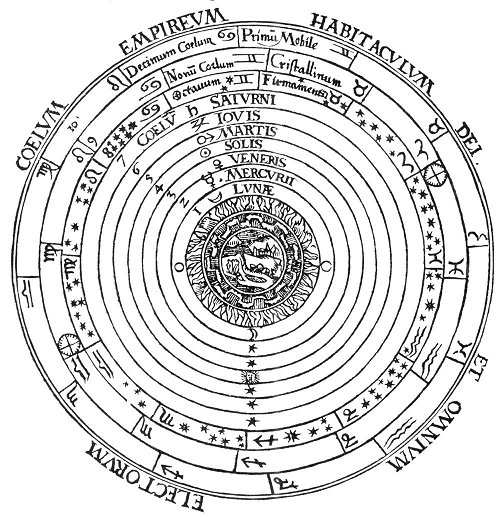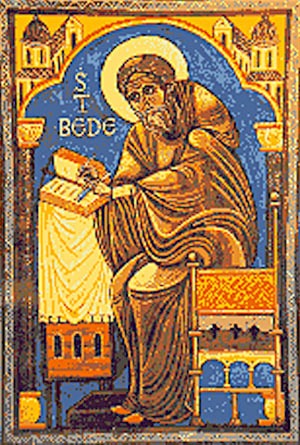The death of Boethius in the sixth century marked the close of the ancient Greek school of philosophy. The ninth century saw the rise of the new school of Scholasticism, which sought to reconcile philosophy with theology. Representative of the main divisions of the Scholastic school were the Eclecticism of John of Salisbury, the Mysticism of Bernard of Clairvaux and St. Bonaventura, the Rationalism of Peter Abelard, and the pantheistic Mysticism of Meister Eckhart. Among the Arabian Aristotelians were Avicenna and Averroes. The zenith of Scholasticism was reached with the advent of Albertus Magnus and his illustrious disciple, St. Thomas Aquinas. Thomism (the philosophy of St. Thomas Aquinas, sometimes referred to as the Christian Aristotle) sought to reconcile the various factions of the Scholastic school. Thomism was basically Aristotelian with the added concept that faith is a projection of reason.
Scotism, or the doctrine of Voluntarism promulgated by Joannes Duns Scotus, a Franciscan Scholastic, emphasized the power and efficacy of the individual will, as opposed to Thomism. The outstanding characteristic of Scholasticism was its frantic effort to cast all European thought in an Aristotelian mold. Eventually the Schoolmen descended to the level of mere wordmongers who picked the words of Aristotle so clean that nothing but the bones remained. It was this decadent school of meaningless verbiage against which Sir Francis Bacon directed his bitter shafts of irony and which he relegated to the potter’s field of discarded notions.
The Baconian, or inductive, system of reasoning (whereby facts are arrived at by a process of observation and verified by experimentation) cleared the way for the schools of modern science. Bacon was followed by Thomas Hobbes (for some time his secretary), who held mathematics to be the only exact science and thought to be essentially a mathematical process. Hobbes declared matter to be the only reality, and scientific investigation to be limited to the study of bodies, the phenomena relative to their probable causes, and the consequences which flow from them under every variety of circumstance. Hobbes laid special stress upon the significance of words, declaring understanding to be the faculty of perceiving the relationship between words and the objects for which they stand.
Having broken away from the scholastic and theological schools, Post-Reformation, or modern, philosophy experienced a most prolific growth along many diverse lines. According to Humanism, man is the measure of all things; Rationalism makes the reasoning faculties the basis of all knowledge; Political Philosophy holds that man must comprehend his natural, social, and national privileges; Empiricism declares that alone to be true which is demonstrable by experiment or experience; Moralism emphasizes the necessity of right conduct as a fundamental philosophic tenet; Idealism asserts the realities of the universe to be superphysical–either mental or psychical; Realism, the reverse; and Phenomenalism restricts knowledge to facts or events which can be scientifically described or explained. The most recent developments in the field of philosophic thought are Behaviorism and Neo-Realism. The former estimates the intrinsic characteristics through an analysis of behavior; the latter may be summed up as the total extinction of idealism.
Baruch de Spinoza, the eminent Dutch philosopher, conceived God to be a substance absolutely self-existent and needing no other conception besides itself to render it complete and intelligible. The nature of this Being was held by Spinoza to be comprehensible only through its attributes, which are extension and thought: these combine
THE PTOLEMAIC SCHEME OF THE UNIVERSE.
From an old print, courtesy of Carl Oscar Borg. In ridiculing the geocentric system of astronomy expounded by Claudius Ptolemy, modem astronomers have overlooked the philosophic key to the Ptolemaic system. The universe of Ptolemy is a diagrammatic representation of the relationships existing between the various divine and elemental parts of every creature, and is not concerned with astronomy as that science is now comprehended. In the above figure, special attention is called to the three circles of zodiacs surrounding the orbits of the planets. These zodiacs represent the threefold spiritual constitution of the universe. The orbits of the planets are the Governors of the World and the four elemental spheres in the center represent the physical constitution of both man and the universe, Ptolemy’s scheme of the universe is simply a cross section of the universal aura, the planets and elements to which he refers having no relation to those recognized by modern astronomers.

Moe is the founder of GnosticWarrior.com. He is a father, husband, author, martial arts black belt, and an expert in Gnosticism, the occult, and esotericism.



